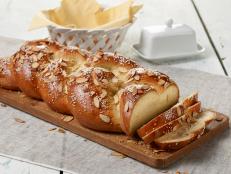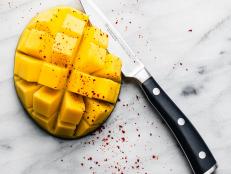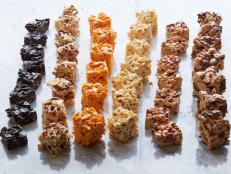The Bread Winner: Why You Should Make Easy Loaves at Home
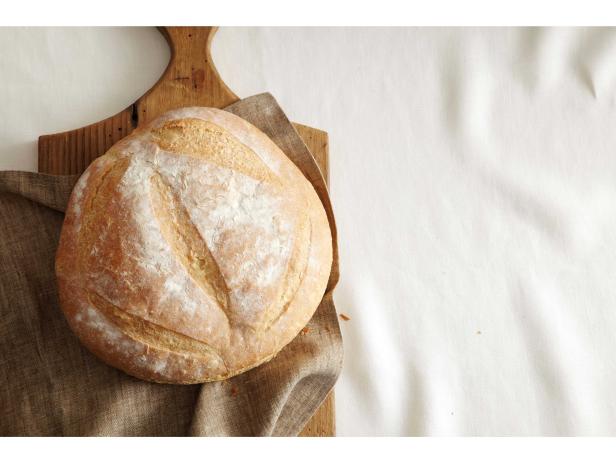
There is nothing more effective at knocking the cold grip of winter off your home than filling it up with the aroma of fresh-baked bread. Making bread from scratch at home might seem like an intimidating thing to do, but master baker Nick Malgieri was kind enough to share with us his foolproof tips for success, as well as his recipe for Easiest Home-Baked Bread (pictured above and recipe below). What does a master baker do to get a perfect loaf every time? When we asked him, Malgieri said.
- Use the right flour: unbleached bread flour. I like Gold Medal best.
- Measure accurately: In my book Bread, I specify weighing even the liquids. The only things measured by volume are spoonfuls of salt, dry yeast, etc.
- Take your time: Bread dough that rises slowly over a long time develops a better flavor and texture than breads that are rushed.
- Try something easy first: focaccia, or one-step white bread. Once you’ve had a few successes, you’ll have the confidence to attempt more elaborate projects.
And with that confidence comes a bit more finesse in your personal bread-baking style. Malgieri revealed to us three of his favorite bread-baking hacks, little tips to make the process easier and more enjoyable without sacrificing delicious results:
- Use an X-Acto knife to score the top of a loaf instead of a French blade called a lame.
- Use a heavy skillet, preheated in the oven, as a baking stone for a round loaf.
- Use a spray bottle to create steam, instead of a pan of water or the skillet/ice cube method.
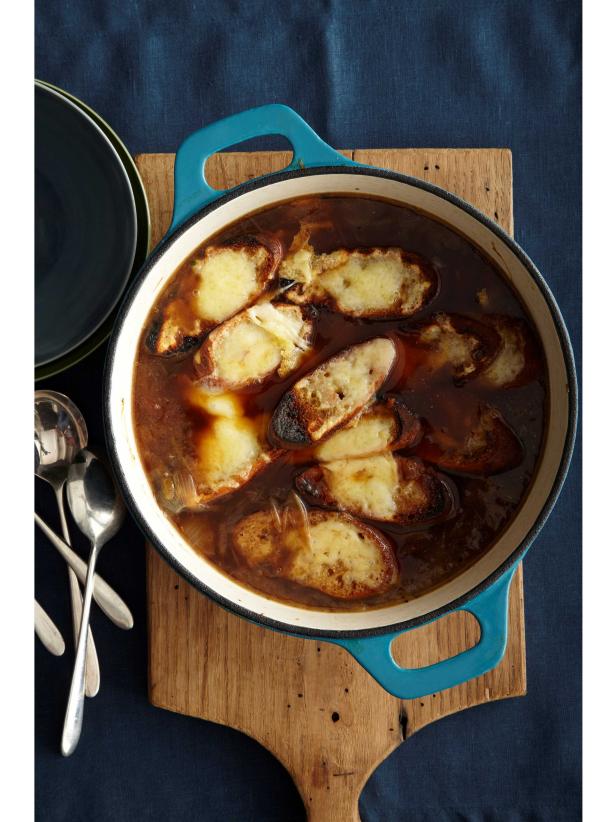
Give Malgieri’s recipe for the Easiest Home-Baked Bread a try and see for yourself how different bread made from scratch at home can taste. If you want to take it a step further, you can order a copy of Malgieri’s book, Bread, which features recipes for various types of breads, rolls, buns and sweet treats, plus recipes for composed dishes that feature the breads in the book. Bread’s composed-dish recipes cover everything from French onion soup (pictured above) to sandwich and burger ideas. “I come from a background of Southern Italian country cooking where bread figures in so many recipes – bread soups, salads, stuffings, even as a pasta condiment instead of grated cheese,” Malgieri explains. “There are even delicate desserts (not Italian) that use bread, like a Viennese-style chocolate cake or a French apple charlotte.”
Above all else, baking bread at home is a fun, rewarding experience. Malgieri’s last words of advice for home cooks are simple to follow: “Take your time, have patience, and don’t rush if you want to be successful at baking bread.”
If you’ve never baked bread before or you want a bread that’s easy and relatively quick to prepare, look no further. This dough may be mixed by machine or by hand, plus it’s easy to shape into a loaf. Once you’ve baked this one, you’ll want to try some of the others in this chapter. All the other recipes in this chapter are mixed the same way and, with one exception, all are formed the same way too.
3 cups/400 grams bread flour (spoon into a dry-measure cup and level off)
One heavy cookie sheet or pizza pan dusted with cornmeal or lined with parchment paper, plus a spray bottle filled with warm water
Pour the water into the bowl of an electric mixer and whisk in the yeast. Wait 30 seconds and whisk again.
Use a large rubber spatula to stir the flour into the yeast and water mixture a little at a time. Make sure all the flour is mixed into the liquid and there isn’t any clinging to the side of the bowl.
Place the bowl on the mixer and attach the dough hook. Mix on the lowest speed until the dough comes together around the dough hook, 1 to 2 minutes. Stop the mixer and pull the dough away from the hook; let the dough rest for 15 minutes.
Increase the mixer speed to low/medium, sprinkle in the salt, and mix until the dough is smooth and elastic, 2 to 3 minutes longer.
Scrape the dough into an oiled bowl and turn it over so that the top is oiled. Cover the bowl with plastic wrap and let the dough ferment until it starts to puff, about 30 minutes.
Scrape the dough onto a floured work surface, flour your hands, and gently flatten the dough to a disk. Fold the two sides in to overlap at the middle, then roll the top toward you all the way to the end, jelly-roll style. Invert, flatten, and repeat. Place the dough back in the bowl seam side down and cover. Let the dough ferment until fully doubled in bulk, about 30 minutes.
To form the dough into a boule-shaped loaf, use a flexible plastic scraper to slide it from the bowl to a floured work surface; try not to deflate the dough. Fold the edges of the dough all around its perimeter into the center. Round the loaf by pushing against the bottom of the dough all around with the
sides of your hands held palms upward. The dough will quickly form an even sphere.
Place the dough on the prepared pan and cover it with a flat-weave towel or piece of sprayed or oiled plastic wrap and let the dough rest until it starts to puff again, about 30 minutes. Set a rack in the middle level of the oven and preheat to 450 degrees F.
Once the dough is proofed about 50 percent larger, flour the palms of your hands and gently press to flatten it to about 1 inch thick. Use an X-Acto knife or single-edge razor blade to cut 4 slashes in the form of a square at the edges of the loaf and a 1/8-inch-deep slash across the diameter of the loaf, then generously spray it with water. Place the pan in the oven.
Wait 5 minutes, then open the oven and spray the loaf again and reduce the oven temperature to 425 degrees F. Bake the loaf until it is well risen and deep golden and the internal temperature reads 200 degrees F on an instant read thermometer, 20 to 30 minutes.
Cool the loaf on a rack. Keep the bread loosely covered at room temperature on the day it’s baked. Wrap and freeze for longer storage. Reheat at 350 degrees F for 5 minutes and cool before serving.
Recipes and photography from BREAD by Nick Malgieri. Copyright © 2014 by Nick Malgieri. Used by permission of Kyle Books. All rights reserved.
























